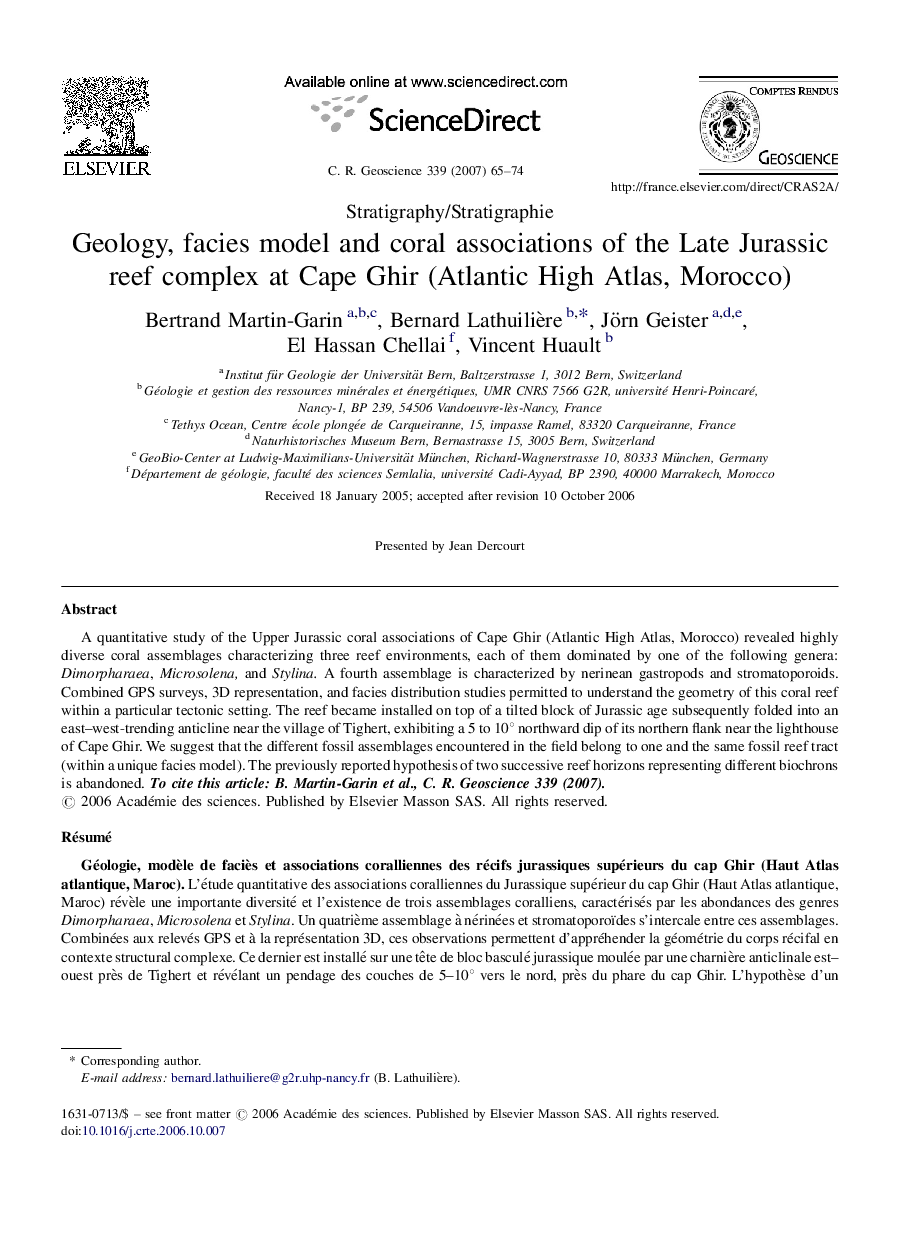| کد مقاله | کد نشریه | سال انتشار | مقاله انگلیسی | نسخه تمام متن |
|---|---|---|---|---|
| 4462859 | 1313528 | 2007 | 10 صفحه PDF | دانلود رایگان |

A quantitative study of the Upper Jurassic coral associations of Cape Ghir (Atlantic High Atlas, Morocco) revealed highly diverse coral assemblages characterizing three reef environments, each of them dominated by one of the following genera: Dimorpharaea, Microsolena, and Stylina. A fourth assemblage is characterized by nerinean gastropods and stromatoporoids. Combined GPS surveys, 3D representation, and facies distribution studies permitted to understand the geometry of this coral reef within a particular tectonic setting. The reef became installed on top of a tilted block of Jurassic age subsequently folded into an east–west-trending anticline near the village of Tighert, exhibiting a 5 to 10° northward dip of its northern flank near the lighthouse of Cape Ghir. We suggest that the different fossil assemblages encountered in the field belong to one and the same fossil reef tract (within a unique facies model). The previously reported hypothesis of two successive reef horizons representing different biochrons is abandoned.
RésuméL’étude quantitative des associations coralliennes du Jurassique supérieur du cap Ghir (Haut Atlas atlantique, Maroc) révèle une importante diversité et l’existence de trois assemblages coralliens, caractérisés par les abondances des genres Dimorpharaea, Microsolena et Stylina. Un quatrième assemblage à nérinées et stromatoporoïdes s’intercale entre ces assemblages. Combinées aux relevés GPS et à la représentation 3D, ces observations permettent d’appréhender la géométrie du corps récifal en contexte structural complexe. Ce dernier est installé sur une tête de bloc basculé jurassique moulée par une charnière anticlinale est–ouest près de Tighert et révélant un pendage des couches de 5–10° vers le nord, près du phare du cap Ghir. L’hypothèse d’un complexe récifal zoné correspondant à un modèle de faciès unique est avancée, ne rendant plus nécessaire la succession chronologique de deux épisodes différents.
Journal: Comptes Rendus Geoscience - Volume 339, Issue 1, January 2007, Pages 65–74